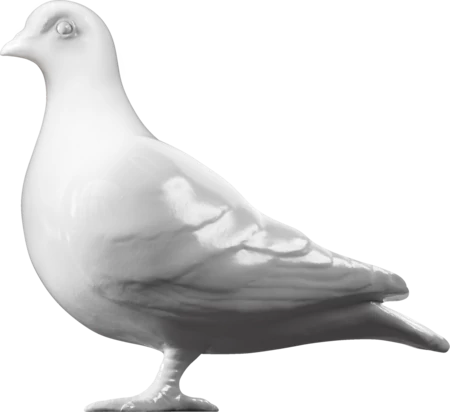Post-Medieval — 1600-1800; 17th century; 18th century
Christ the Good Shepherd
Ivory carving depicting Christ the Good Shepherd. The figure of the Christ-child-shepherd forms the upper section of an elaborate symbolic carving used by Portuguese missionaries for religious instruction. The carving was probably made in Goa during the 17th or 18th century, although 16th century parallels are not unknown. Complete examples of this type survive in a number of museums and private collections. They are all c. 25 cm high and consist of the figure of a child shepherd, seated high on a tall conical ivory stand. The iconographic significance is fairly straightforward. The representation of Christ as Shepherd is clearly derived from St John's Gospel Ch 10 v 11 and 15. This particular representation in devotional art of Christ as Shepherd, seems to have undergone a revival in Indo-Portuguese ivory carvings of the late Renaissance; stimulated perhaps by colonial expansion and its attendant missionary endeavour (cf. v 16). In all the carvings of this type the child is shown apparently asleep, with his head resting on his right hand and legs half crossed. But this repose does not accord with the image of a wakeful alert shepherd, and the explanation for this rather surprising and curious posture may lie in Buddhist and Hindu symbolism. There is a striking similarity in the pose of the child-shepherd to the 7th century seated figure of the Buddha, Bodhisattva Maitreya. The posture is characteristic. The Maitreya is sitting in his paradise, Tushita, in preparation for future birth in our world for the salavation of living things. Benardo Ferrao de Tavares e Tavora in his book entitled Imaginaria Luso-Oriental suggests further that the Good Shepherd ivory figure may also represent Krishna, the human atavar of the Hindu trinity of Brahma, Vishnu and Krishna. Iconographically, this is much more difficult to accept. A triple religious significance, however, is possible and cannot be dismissed.
- Category:
- Post-Medieval
- Object ID:
- A27128
- Object name:
- Christ the Good Shepherd
- Object type:
- Artist/Maker:
- Anonymous, -
- Related people:
- Related events:
- Related places:
- Production date:
- 1600-1800; 17th century; 18th century
- Material:
ivory, Asian elephant ivory
- Measurements/duration:
- H 95 mm, W 45 mm, D 40 mm (overall)
- Part of:
- —
- On display:
- —
- Record quality:
- 100%
- Part of this object:
- —
- Owner Status & Credit:
Permanent collection
- Copyright holder:
digital image © London Museum
- Image credit:
- —
- Creative commons usage:
- —
- License this image:
To license this image for commercial use, please contact the London Museum Picture Library.
